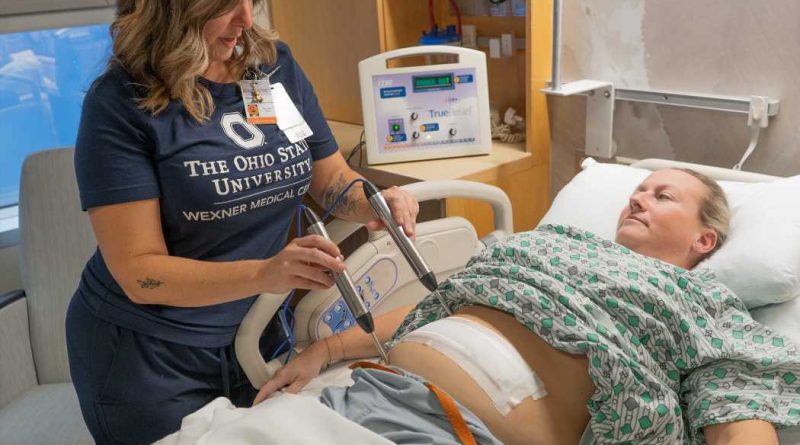Opioid use after C-section reduced by nearly half with non-invasive pain management device, study finds

According to the Centers for Disease Control and Prevention, more than 1 million people deliver their infants by cesarean section (C-section) each year, making it the most common surgical procedure in the United States. After discharge, patients are typically prescribed opioids for pain management, but narcotics come with concern over side effects and the risk of addiction.
In a recent study published in JAMA Network Open, a team at The Ohio State University Wexner Medical Center looked into a drug-free and non-invasive alternative to managing patients’ pain after C-section. The research team studied the use of a device that emits electrical pulses when held near the C-section incision site, and they found that patients who received the treatment used 47% less opioids to control their pain compared to those who did not receive the treatment.
“For many patients, especially as the effects of their epidural are wearing off, they have a lot of pain on the outside or right near the incision in the first one to two days,” said the study’s lead investigator Jennifer Grasch, MD, a fellow in maternal fetal medicine at Ohio State Wexner Medical Center. “Our hope was that this device would help address that pain. By better controlling a patient’s pain during those first two days, it would lead to lower inflammation and less pain long-term as they’re recovering and taking care of a new baby.”
The high frequency neurostimulation device, called TrueReliefÒ, has two stainless steel probes that are held near the C-section incision site. The patient feels a vibration during the treatment process which lasts a total of 12 minutes. The probes are moved above the incision every two minutes and stimulate the nerves.
The randomized clinical trial included a control group and an experimental group. Half of the patients received treatment with the neurostimulation device, and the other half received treatment with an identical sham device that emitted the same vibration feeling. Investigators did not change how many opioid pills the patients’ doctors prescribed or how many were available to the patients.
“Our study suggests that adding transcutaneous treatment with a high-frequency (20,000 Hz) electrical stimulation device decreases opioid use after C-section delivery without compromising pain control,” said Grasch.
“Future studies focused on integrating the device into routine pain management care and in other settings and surgical procedures are needed to confirm the feasibility of using the device in clinical practice,” said principal investigator Kara Rood, MD, maternal fetal medicine physician at Ohio State Wexner Medical Center and associate professor in obstetrics and gynecology at Ohio State College of Medicine.
More information:
Jennifer L. Grasch et al, Noninvasive Bioelectronic Treatment of Postcesarean Pain, JAMA Network Open (2023). DOI: 10.1001/jamanetworkopen.2023.38188
Journal information:
JAMA Network Open
Source: Read Full Article
